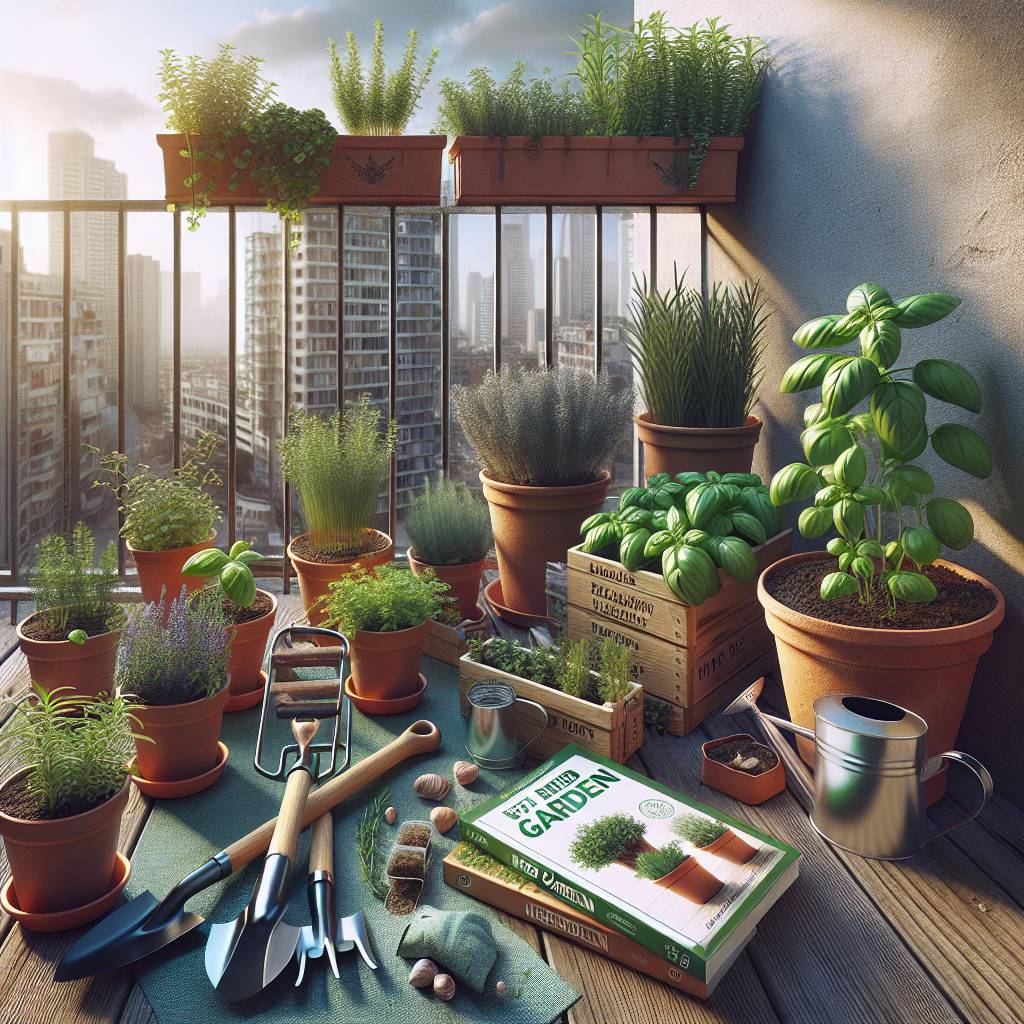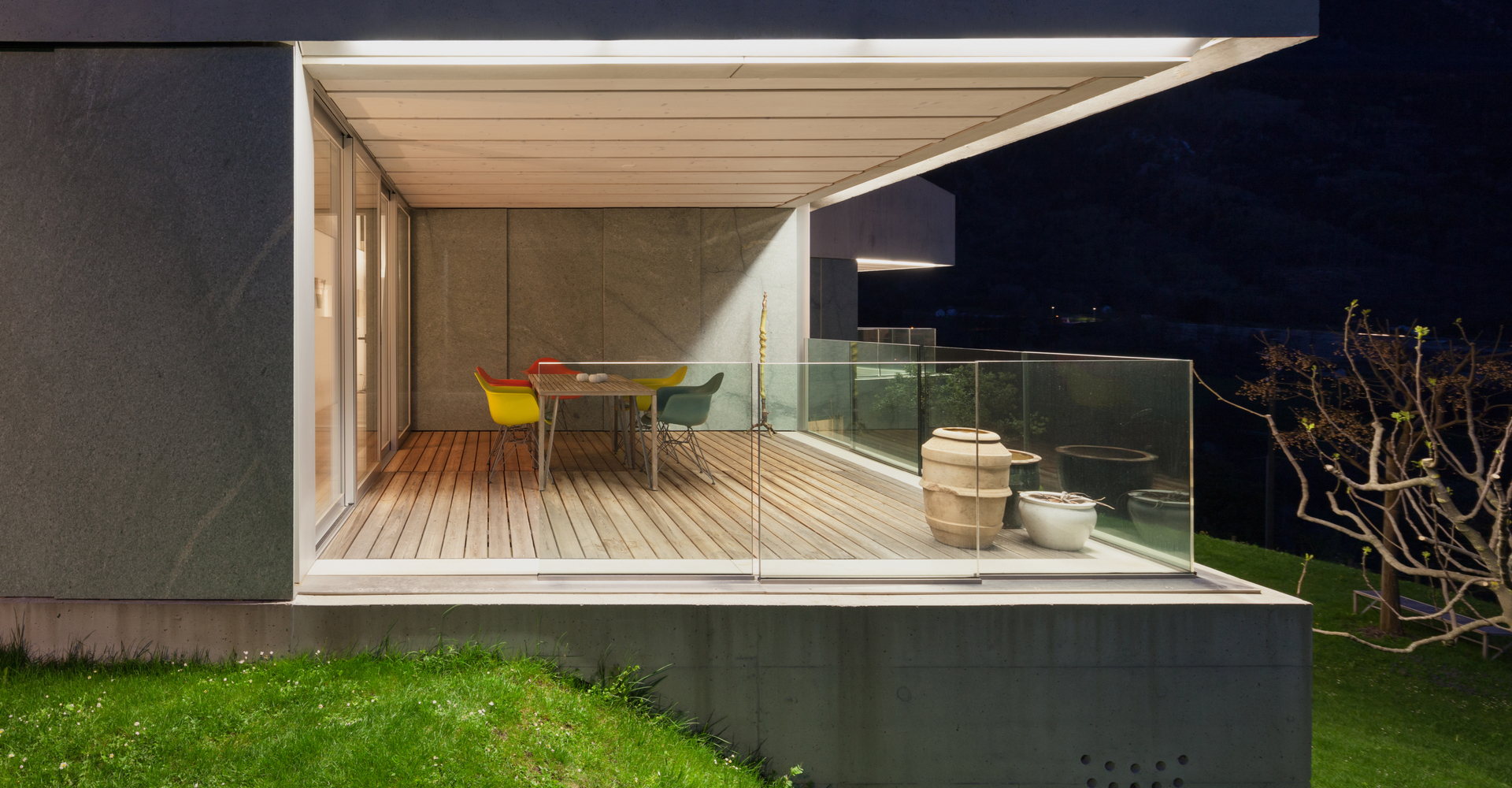Imagine transforming your balcony into a lush oasis of fresh herbs, ready to elevate your culinary creations. Whether you’re a novice gardener or an urban dweller with limited space, creating a thriving herb garden on your balcony is within reach. In this guide, we’ll delve into the essential steps and tips for starting and maintaining a flourishing balcony herb garden. From selecting the right herbs to maximizing sunlight and choosing suitable containers, we’ve got you covered. Embrace the satisfaction of harvesting homegrown basil, mint, thyme, and other herbs just steps away from your kitchen.
Key Takeaways
- Start with easy-to-grow herbs like basil, mint, and chives for a successful beginning in balcony herb gardening.
- Choose pots with good drainage and quality potting soil to ensure healthy growth of your herbs on the balcony.
- Position your herbs in areas with adequate sunlight and provide consistent watering to promote optimal growth.
- Regularly prune and harvest your herbs to encourage new growth and maintain the health of your balcony garden.
- Prepare your balcony garden for winter by bringing sensitive herbs indoors and protecting the remaining plants from harsh weather conditions.
- Maximize limited space by using vertical planters, hanging baskets, and creative shelving to create a functional and visually appealing balcony herb garden.
Beginner’s Essentials for Starting a Herb Garden
Benefits of Balcony Herb Gardens
Creating a balcony herb garden comes with several benefits. Not only does it add greenery and beauty to your space, but it also provides you with fresh herbs for cooking. Imagine being able to step out onto your balcony and snip off some fresh basil or mint for your recipes! Tending to your herb garden can be a therapeutic and relaxing activity. It’s an excellent way to connect with nature even if you need live in the heart of the city.
Starting a herb garden on your balcony doesn’t require a large area or extensive gardening experience. With just a few essential tools and supplies, you can set up a thriving mini-garden right outside your door.
Necessary Tools and Supplies
To get started with your balcony herb garden, gather some basic tools such as small hand trowels, gardening gloves, watering cans or spray bottles, lightweight containers like pots or planters, and the need. These containers should have drainage holes at the bottom to prevent waterlogging.
When choosing soil for your herbs, opt for high-quality potting mix that’s specifically formulated for container gardens. This type of soil ensures proper drainage while providing essential nutrients for healthy plant growth.
In addition to these tools and supplies, consider investing in good quality seeds or young plants from nurseries. While starting from seeds allows you to witness the entire growth process from scratch, purchasing young plants gives you a head start on cultivating mature herbs.
Suitable Herbs for Balcony Gardens
Not all herbs thrive equally well in balcony environments due to factors like sunlight exposure and wind conditions. Some suitable options include basil, rosemary, thyme, chives, and parsley among others. Each of these herbs has its own unique growing requirements so make sure they are compatible with the amount of sunlight available on your balcony before planting them.
Selecting Suitable Herbs for Your Balcony
Sunlight and Herb Selection
When starting a balcony herb garden, it’s crucial to consider the amount of sunlight your balcony receives. Some herbs thrive in full sun, while others prefer partial shade. For instance, basil and rosemary require at least six hours of direct sunlight, making them ideal choices for sunny balconies. On the other hand, herbs like mint and parsley can tolerate less sunlight and are suitable for partially shaded balconies.
It’s important to research the growth habits and care requirements of different herbs before making your selection. This ensures that you choose herbs that align with your available space and level of commitment. For example, some herbs such as thyme and oregano have spreading growth habits, so they may require more space or regular pruning to keep them in check.
Personal Preference
Selecting herbs that you enjoy using in your cooking or for medicinal purposes is another key consideration when starting a balcony herb garden. If you frequently use fresh basil in pasta dishes or enjoy brewing mint tea, these would be excellent choices for your garden. Not only does this ensure that you’ll derive maximum utility from your herbal harvests, but it also adds an element of enjoyment to the gardening process.
Consider the flavors you love most – whether it’s the robustness of rosemary or the freshness of cilantro – as well as any medicinal properties you seek from certain herbs. For example, if you’re fond of Italian cuisine, growing oregano, basil, and thyme on your balcony can provide easy access to essential ingredients for pasta sauces and pizza toppings.
Soil and Potting Basics for Balcony Gardens
Choosing the Right Potting Mix
When starting a balcony herb garden, it’s crucial to select the right potting mix. Look for a well-draining potting mix specifically designed for container gardening. This type of mix ensures that water flows through the soil easily, preventing root rot and waterlogging. These mixes often contain essential nutrients that support plant growth, promoting healthy herbs.
It’s important to understand that regular garden soil may not be suitable for potted plants as it tends to become compacted in containers, hindering proper drainage and root development. Therefore, investing in a high-quality potting mix is vital for the success of your balcony herb garden.
Ensuring Proper Drainage
Adequate drainage is key. To prevent water from accumulating at the bottom of your pots and causing root rot, make sure each container has sufficient drainage holes. These holes allow excess water to escape, maintaining optimal moisture levels within the soil.
Without proper drainage, plants can suffer from suffocated roots due to excessive moisture buildup. As a result, they may wilt or develop yellow leaves as a sign of stress caused by poor drainage conditions. By ensuring adequate drainage in your pots, you create an environment where herbs can thrive without being subjected to water-related issues.
Improving Soil Fertility with Organic Matter
In addition to using a quality potting mix and providing adequate drainage, consider enhancing your soil’s fertility by incorporating organic matter or compost into the mix before planting your herbs. Organic matter enriches the soil with essential nutrients while improving its structure and ability to retain moisture – both critical factors for successful herb cultivation on balconies.
The introduction of organic matter also encourages beneficial microbial activity within the soil which further supports plant growth and overall health. Compost made from kitchen scraps or yard waste is an excellent source of organic matter that can be added directly into your potting mix before planting new herbs.
Planting and Positioning for Optimal Growth
Proper Spacing for Healthy Growth
Spacing is crucial for the healthy growth of your herbs. Providing adequate space allows each plant to receive sufficient airflow, sunlight, and water. This prevents overcrowding, which can lead to mold, mildew, or stunted growth.
For instance, if you’re growing basil and thyme in the same container on your balcony, ensure that there’s enough room between them. Basil typically needs around 12 inches of space between plants while thyme requires about 6-12 inches. By giving them their respective spaces, you’re creating an environment where they can thrive without competing for resources.
Consider the size of the pots when spacing out your herbs. Larger pots allow for more root development and better access to nutrients and water. Smaller pots may restrict root growth and result in plants struggling to obtain what they need.
Positioning Taller Herbs at the Back
To optimize sunlight exposure for all your balcony herbs, position taller species at the back of your garden area or against a wall or railing. This prevents them from shading smaller ones and ensures that each plant receives its fair share of sunlight throughout the day.
For example:
- If you have rosemary (a tall herb) alongside chives (a shorter herb), place the rosemary pot behind the chives’ pot so that it doesn’t block sunlight from reaching them.
- Similarly, if you’re growing parsley (tall) with oregano (shorter), arrange them accordingly to avoid any overshadowing issues.
By following this approach, you’ll guarantee that no herb misses out on essential light needed for photosynthesis – a vital process for their growth.
Recommended Planting Depths and Spacing Guidelines
Each herb has specific requirements when it comes to planting depths and spacing guidelines:
- For example:
- Chives should be planted with their roots just below soil level but not too deep.
- Mint tends to spread vigorously; therefore it’s best grown in a container by itself due to its invasive nature.
- Some herbs like cilantro require regular watering as they are prone to bolting in hot weather conditions.
Watering and Fertilizing Strategies
Regular Watering
Watering your balcony herb garden is crucial for the plants to thrive. Ensure that the soil is consistently moist, but not overly saturated. Different herbs have varying water requirements, so it’s essential to understand each plant’s needs. For instance, basil and mint prefer slightly more moisture compared to rosemary or thyme.
When watering your herbs, it’s best to do so in the morning or early afternoon as this allows any excess moisture on the leaves to dry before evening. This practice helps prevent diseases caused by prolonged leaf wetness, ensuring the overall health of your plants.
Fertilizing Techniques
In addition to regular watering, providing essential nutrients through fertilization is vital for a flourishing herb garden. Utilize a slow-release fertilizer specifically formulated for edible plants or opt for organic alternatives such as compost tea or fish emulsion. These options supply necessary nutrients without exposing you and your family to harmful chemicals often found in synthetic fertilizers.
Adjusting both watering and fertilizing frequency based on individual herb requirements ensures that each plant receives optimal care tailored to its specific needs. Observing how your herbs respond after adjusting these factors can help you fine-tune their care routine over time.
Design Ideas to Maximize Limited Space
Utilize Vertical Space
When starting a balcony herb garden, it’s essential to make the most of limited space. One excellent design idea is to utilize vertical space by hanging pots or installing wall-mounted planters. This allows you to grow herbs without taking up valuable floor space, making it a good idea for small balconies in the city. By hanging containers, you create an eye-catching display while leaving plenty of room on the floor for movement.
Another way to maximize vertical space is by incorporating trellises or stakes for climbing herbs like tomatoes or mint. These plants can grow upwards rather than outwards, giving you more room for other herbs and creating a visually appealing garden.
Group Complementary Herbs Together
Grouping complementary herbs together in attractive arrangements not only saves space but also serves a practical purpose. For example, planting basil next to tomatoes can enhance the flavor of both plants and save precious balcony real estate. Combining rosemary with thyme creates an aromatic corner that adds charm to your outdoor living area.
By strategically placing complementary herbs close together in containers or baskets, you create a cohesive look while maximizing every inch of available space on your balcony.
Choose the Right Containers
Selecting suitable containers is crucial when designing a balcony herb garden. Opt for compact yet deep pots that allow ample root growth while fitting neatly into small spaces. Hanging baskets are another great option as they free up floor space and add visual interest at different heights.
Moreover, consider using window boxes attached to railings if your balcony has them; this provides additional growing areas without encroaching on walking areas or seating spots.
Caring and Pruning for Healthy Herbs
Regular Inspections
Regularly inspect your herbs for signs of pests or diseases. Look out for any unusual spots, discoloration, or holes on the leaves. Check the stems and undersides of the leaves as well. Pests like aphids or spider mites can quickly infest herb plants without proper monitoring.
Inspecting your herbs also allows you to catch any early signs of disease, such as powdery mildew or leaf spot, before they spread throughout the entire plant. By catching these issues early on, you can take steps to address them effectively and prevent them from harming your entire balcony herb garden.
It’s important to inspect your herbs regularly because catching problems early on makes it easier to treat them effectively. This practice helps maintain the overall health of your herbs and ensures that they continue thriving in their environment.
Pinching Back and Trimming
Pinch back or trim your herbs to promote bushier growth and prevent legginess. When an herb becomes too tall with a long stem but few leaves at the base, it is considered leggy. This often happens when there isn’t enough light reaching all parts of the plant equally.
By pinching off the tips of new growth or trimming some stems back, you encourage lateral bud development which results in a fuller plant with more foliage lower down on its stems. Trimming also helps control the size of your plants if space is limited on your balcony garden while promoting healthier growth patterns among different types of herbs growing close together.
Removing Dead Leaves
Remove any dead or yellowing leaves from your herb plants regularly to maintain their health. Dead leaves not only detract from a plant’s appearance but also attract pests and diseases that could harm nearby healthy foliage. Removing these unhealthy parts redirects energy toward new growth instead of trying to revive dying areas.
Harvesting and Maintenance Tips
Harvesting Tips
Timing is crucial. It’s best to pick the herbs in the morning as their essential oils are most concentrated at this time. This means you’ll get the most flavor and fragrance from your harvest. Using sharp scissors or pruning shears is important to avoid damaging the plants. When cutting, make sure not to take more than a third of the plant’s growth to allow it to continue thriving.
Regularly checking for weeds is also crucial when maintaining your balcony herb garden. Weeds can compete with your herbs for resources like water, sunlight, and nutrients, so removing them promptly is essential for the health of your plants.
Maintenance Notes
To ensure that your balcony herb garden continues to thrive, there are some key maintenance tips you should keep in mind. Firstly, be mindful of overwatering; while it’s important to keep the soil moist but not waterlogged, too much water can lead to root rot and other issues.
Remember that different herbs have varying needs. For example, basil loves sunlight and requires regular watering but doesn’t do well if overwatered or left in soggy soil.
It’s also beneficial to periodically fertilize your plants with an organic fertilizer designed specifically for edible plants like herbs. This will provide them with additional nutrients they need for healthy growth without introducing harmful chemicals into your homegrown produce.
Lastly, consider rotating pots occasionally if you notice certain areas of your balcony receive more sunlight than others throughout the day; this helps ensure all of your herbs receive adequate light exposure.
Preparing Your Balcony Garden for Winter
Bringing Potted Herbs Indoors
When the first frost approaches, it’s essential to bring potted herbs indoors if they are not cold-hardy. This will protect them from the harsh winter temperatures that could damage or kill the plants. For example, delicate herbs like basil and cilantro are sensitive to cold weather and should be moved inside before the frost sets in.
It’s important to select a suitable location for your potted herbs indoors. Find a spot with ample sunlight, such as a sunny windowsill or near a south-facing window. Ensure that the indoor environment is conducive to plant growth by maintaining adequate humidity levels and providing proper ventilation.
To avoid shocking the plants when transitioning them indoors, gradually acclimate them to lower light conditions over several days before bringing them inside. This gradual adjustment will help prevent stress on the plants and promote their continued growth during the winter months.
Mulching Around Perennial Herbs
Mulching around perennial herbs is an effective way to protect their roots from freezing temperatures during winter. Applying a layer of mulch around these plants helps insulate the soil, preventing rapid temperature fluctuations that can harm root systems. Organic materials such as straw, shredded leaves, or wood chips make excellent mulch options for perennial herbs.
In addition to protecting against freezing temperatures, mulch also helps retain moisture in the soil by reducing evaporation. This is particularly beneficial during dry winter periods when natural precipitation may be limited. By conserving moisture and moderating soil temperature, mulch contributes to overall plant health and resilience throughout the season.
For instance, rosemary and thyme are examples of perennial herbs that benefit from well-mulched soil during winter months. These aromatic herbs thrive with consistent moisture levels and protection from extreme cold conditions provided by quality mulching practices.
Cleaning and Storing Gardening Tools
Properly cleaning and storing gardening tools before winter sets in can extend their lifespan while ensuring they remain in good working condition for future use. After completing your fall gardening tasks such as harvesting vegetables or pruning bushes, take time to clean dirt and debris off your tools using warm soapy water.
Once cleaned thoroughly, allow your gardening tools to air-dry completely before applying a thin coat of oil on metal parts like blades or trowels to prevent rust formation over the wind-heavy period ahead.
Closing Thoughts
You’ve now got the lowdown on kickstarting your very own balcony herb garden. From picking the right herbs to nailing the soil and potting game, you’re all set to get your green thumb on. Remember, it’s all about finding that sweet spot where your herbs can soak up the sun and thrive. So, go ahead, get your hands dirty, and watch those little green buddies flourish right before your eyes!
Now that you’re armed with these nuggets of wisdom, it’s time to put them into action. Grab those pots, gather your favorite herbs, and start creating your own slice of herb heaven on your balcony. Happy gardening!
Frequently Asked Questions
How do I choose the right herbs for my balcony garden?
When selecting herbs for your balcony garden, consider your local climate and sunlight conditions. Opt for versatile herbs like basil, mint, and rosemary that thrive in pots. Choose a mix of culinary and aromatic herbs to cater to both cooking needs and sensory enjoyment.
What are some space-saving design ideas for balcony herb gardens?
To maximize limited space on your balcony, consider vertical gardening with wall-mounted planters or tiered shelving. Hanging baskets can also be used to free up floor space while adding visual interest. Incorporating multi-functional furniture like a bench with built-in planters can optimize space usage.
How should I care for and prune my balcony herb garden?
Regularly inspect your herbs for signs of pests or disease, ensuring prompt intervention if needed. Pruning is essential to encourage bushy growth and prevent overcrowding. Use clean, sharp scissors to trim away any dead or overgrown foliage while promoting healthy new growth.
When is the best time to harvest herbs from my balcony garden?
Harvesting times vary depending on the type of herb but generally occur before flowering when flavors are most potent. Early morning is often ideal as it allows harvested leaves to retain their maximum flavor before the sun’s heat diminishes their essential oils.
How should I prepare my balcony garden for winter?
Before winter sets in, bring potted herbs indoors if possible or protect them with frost cloth if they must remain outside. Consider planting cold-hardy varieties such as thyme or chives that can withstand cooler temperatures without extensive protection measures.






